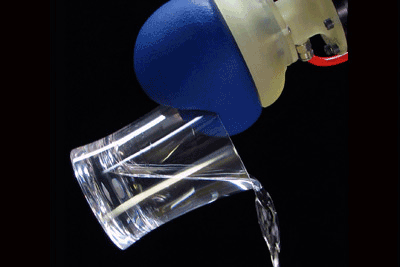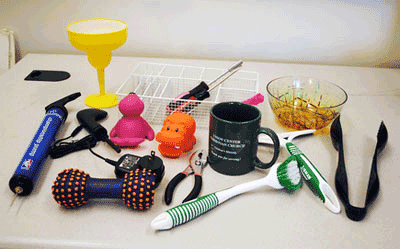Robot gripper teaches itself how to pick up different shaped objects
Researchers give robot ability to learn how to grasp and lift various items
Cornell engineers have developed a revolutionary new robot gripper that can teach itself to pick up all sorts of oddly shaped objects, an ability most autonomous robots lack.

The universal jamming gripper
The whole idea was inspired by the universal jamming gripper, which has proven capable of grasping various objects, ranging from darts to salad tongs, with stability and ease. Combined with this new approach, there are now very few items out there that the robot gripper cannot pick up.
Teaching the robot to learn
The universal jamming gripper was created by Hod Lipson, associate professor of mechanical engineering and computer science at Cornell. As you can tell by the image above, it’s a unique approach to creating a more versatile robotic lifting mechanism: as opposed to mechanical digits or jaws, Lipson’s gripper is a latex balloon filled with ground-up coffee.
Check out the video for a quick review on how they developed it:
To give the universal jamming gripper the ability to pick up really odd, very uniquely-shaped items, the group developed an algorithm that allows the robot to learn grasping skills based on experience, and how to apply these lessons, if you will, to new objects and situations.
But first, in order to actually apply their algorithm to the gripper, the group needed to give the device the ability to see. So, they added a Microsoft Kinect 3D camera, and when the algorithm was applied, the gripper examined the object and applied a series of rectangles that, in turn, matched up with the gripper.
What’s more, when picking up the object, the gripper considers the object’s shape and size to determine its most advantageous grasping point.
The gripper is also equipped with a memory system — it trains on different objects and builds a library of features for the gripper to draw upon when presented with other objects.
Testing their theory out
To ensure their method works, researchers fitted an industrial robot arm with Lipson’s universal jamming gripper and a Microsoft Kinect 3D camera. They then tasked the machine with the task of picking up the aforementioned 23 objects, the likes of which included various tools, toys, and dishes.

Collection of objects that the robot hand was tasked with gripping and lifting. (Via: phys.org)
After studying the objects’ dimensions, tests showed that the gripper was able to successfully grasp and lift each object 90% to 100% of the time.
What’s more, the robot gripper was also able to grasp objects not in the original training set, successfully gripping and lifting these items based on the library it had built up from the earlier assessment of the 23 other objects.
Additional tests
The same tests were run again, but this time with a “pick it up at the center” directive (as opposed to allowing the program to decide on the best grasping point). With this variable in play, the gripper scored a 30-50% success rate (except on flat objects, where both approaches tied at 89%).
The group further tested their program using standard parallel jaws instead of the universal jamming gripper. What’s interesting to note is that the results were, more or less, the same, making the team’s approach “hardware agnostic,” in that it can be used with any type of robot gripper out there.
Presentation
The project was worked on by Prof. Lipson and Ashutosh Saxena, an assistant professor of computer science who also happens to specialize in the developing field of “machine learning.” Co-authors include graduate students Yun Jiang and John Amend.
Their work was presented May 16th, 2012 at the International Conference on Robotics and Automation in St. Paul, MN. ■
Advertisement
Learn more about Electronic Products Magazine





